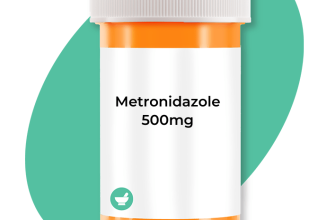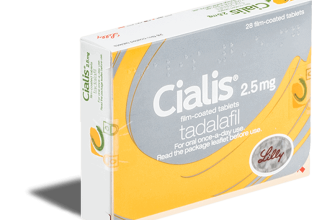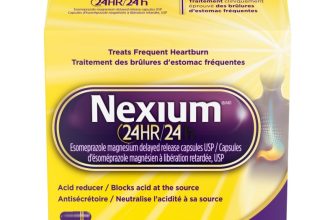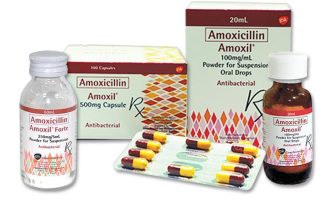If you are considering Topamax for managing symptoms of major depressive disorder, research shows you might find it beneficial. This anticonvulsant medication, primarily used for epilepsy and migraine prevention, has gained attention for its off-label use in mood disorders. Clinical studies indicate that Topiramate, the active ingredient in Topamax, may reduce depressive symptoms while enhancing mood stability.
The effectiveness of Topamax can vary between individuals. Some patients report significant relief from depressive symptoms, while others may experience minimal benefits. Consulting with a healthcare provider ensures you receive a personalized treatment plan. It’s important to discuss your medical history and any other medications to avoid potential interactions.
Monitoring for side effects is crucial when starting Topamax. Common side effects include cognitive impairment and weight loss, which can drastically affect an individual’s quality of life. Staying in close contact with your doctor allows for adjustments in dosage or medication choice if adverse effects develop. Your well-being is a priority, and finding the right approach requires open communication.
Incorporating lifestyle changes, such as regular physical activity and a balanced diet, alongside medication can enhance your overall treatment strategy. Recognizing the symptoms and seeking help early can significantly improve outcomes in managing major depressive disorder. Learn how Topamax fits into your comprehensive treatment plan and take proactive steps towards a healthier mental state.
- Topamax and Major Depressive Disorder
- Mechanism of Action
- Clinical Considerations
- Understanding Topamax: An Overview
- Mechanism of Action
- Dosage and Administration
- Mechanism of Action in the Brain
- Indications for Use in Major Depressive Disorder
- Dosage Guidelines and Administration
- Potential Side Effects and Risks
- Common Side Effects
- Serious Risks
- Comparison with Other Antidepressants
- Efficacy and Mechanism
- Clinical Studies Supporting Its Use
- Patient Experiences and Testimonials
Topamax and Major Depressive Disorder
Topamax, known generically as topiramate, is primarily used as an anticonvulsant and for migraine prevention. However, emerging studies suggest its potential in managing symptoms of major depressive disorder (MDD). Many healthcare professionals consider it as an adjunct therapy for patients who experience inadequate response to traditional antidepressants.
Mechanism of Action
Topamax works by modulating neurotransmitter activity, particularly gamma-aminobutyric acid (GABA) and glutamate, contributing to mood stabilization. This modulation may help reduce depressive symptoms while also addressing any concurrent anxiety or irritability present in patients.
Clinical Considerations
When integrating Topamax in the treatment plan for MDD, monitor the following:
| Consideration | Details |
|---|---|
| Dosing | Generally starts low and gradually increases to assess tolerance. |
| Side Effects | Includes cognitive impairment, weight loss, and mood changes. Monitor patients closely. |
| Drug Interactions | Be cautious with other medications, especially those affecting the central nervous system. |
| Patient Evaluation | Regularly assess depressive symptoms and overall mental health progress. |
Topamax may not replace standard antidepressant treatments but can provide beneficial effects when combined. Consider psychiatric consultation for optimal management and ensure patients receive holistic care tailored to their unique needs.
Understanding Topamax: An Overview
Topamax, or topiramate, is primarily recognized for treating epilepsy and preventing migraines. Its role in managing major depressive disorder (MDD) is less conventional. Recent studies indicate that Topamax may offer relief for patients experiencing treatment-resistant depression when used alongside antidepressants.
Mechanism of Action
Topamax acts on multiple neurotransmitter systems, influencing gamma-aminobutyric acid (GABA) and glutamate, which helps stabilize mood and reduce depressive symptoms. This dual action can be particularly beneficial for individuals whose depression is difficult to manage with standard treatments.
Dosage and Administration
The typical starting dosage of Topamax for off-label use in MDD is 25 mg daily, gradually increasing to a range of 100-200 mg based on tolerance and response. Monitoring for side effects, such as dizziness and cognitive changes, is crucial during this period. Regular consultations with a healthcare provider help tailor the treatment approach effectively.
| Side Effects | Management Strategies |
|---|---|
| Dizziness | Gradual dose adjustment |
| Cognitive impairment | Monitoring and dosage modification |
| Fatigue | Assessing concurrent medications |
| Weight changes | Regular weigh-ins and dietary guidance |
Consult your healthcare provider if you experience any troubling symptoms or if your depression worsens. Each patient’s reaction varies, making personalized care critical in optimizing treatment outcomes with Topamax.
Mechanism of Action in the Brain
Topamax, also known as topiramate, modulates neurotransmitter activity in the brain, particularly focusing on the gamma-aminobutyric acid (GABA) and glutamate systems. By enhancing GABA’s inhibitory effects, Topamax helps reduce neuronal excitability, which can alleviate symptoms of major depressive disorder.
This medication also inhibits the action of AMPA and kainate receptors, key players in the excitatory neurotransmitter systems. This balance encourages a more stable neural environment, decreasing the likelihood of mood destabilization. Additionally, Topamax affects carbonic anhydrase, which may influence bicarbonate levels and, consequently, neuronal signaling.
The drug’s influence on serotonin receptors offers another avenue for mood enhancement. By interacting with the serotonin system, Topamax contributes to improved emotional regulation, potentially alleviating depressive symptoms.
These combined actions facilitate a more regulated neurotransmitter environment, supporting mood stability and reducing the likelihood of depressive episodes. Understanding this mechanism can aid in making informed decisions about treatment options for those dealing with major depressive disorder.
Indications for Use in Major Depressive Disorder
Topamax (topiramate) serves as an adjunct treatment for individuals diagnosed with major depressive disorder who have not achieved satisfactory results from classical antidepressants. Its mechanism includes influencing neurotransmitter systems, which may help alleviate depressive symptoms.
Prescribing Topamax is particularly beneficial for patients experiencing symptoms accompanied by anxiety or mood dysregulation. Its mood-stabilizing properties can assist in managing co-occurring conditions, providing additional support in treatment plans.
Patients often report a reduction in intrusive thoughts and improved emotional regulation while on Topamax. Furthermore, its potential cognitive-enhancing effects may counteract some cognitive side effects commonly associated with traditional antidepressant therapies.
It is essential to monitor the patient’s response to Topamax closely, as dosage adjustments may be necessary based on individual tolerance and symptomatology. Regular follow-ups can optimize therapeutic outcomes and minimize side effects.
In summary, consider Topamax for major depressive disorder, especially in complex cases where traditional therapies fall short. Its unique properties can pave the way for better management and improved quality of life for patients.
Dosage Guidelines and Administration
The typical starting dose for Topamax in the treatment of major depressive disorder is 25 mg per day. This dose can be increased to achieve optimal therapeutic effects.
- Initial Dose: 25 mg once daily.
- Week 1: Increase to 50 mg daily (25 mg in the morning and 25 mg in the evening).
- Week 2: Increase to 100 mg daily (50 mg in the morning and 50 mg in the evening).
- Maintenance Dose: Adjust based on clinical response, typically ranging from 100 mg to 200 mg daily.
Administer Topamax orally, with or without food. Consistent timing with each dose helps maintain stable drug levels in the body.
Healthcare providers may adjust dosage based on individual tolerance and side effects. Monitor patients regularly to evaluate efficacy and any adverse reactions.
While discontinuing Topamax, taper the dose gradually over at least one to two weeks. This reduces the risk of withdrawal seizures and other complications.
Consult with a healthcare professional before making any dosage adjustments. Regular follow-ups are recommended to ensure optimal dosing and management of major depressive disorder.
Potential Side Effects and Risks
Patients considering Topamax for major depressive disorder should be aware of several potential side effects and risks associated with its use.
Common Side Effects
- Drowsiness
- Dizziness
- Fatigue
- Difficulty concentrating
- Changes in appetite
- Weight loss
These effects may vary among individuals. It is important to communicate with a healthcare provider if any of these become bothersome or persistent.
Serious Risks
- Increased risk of suicidal thoughts or behavior.
- Kidney stones.
- Metabolic acidosis due to decreased bicarbonate levels.
- Vision problems, including acute myopia and glaucoma.
- Hypersensitivity reactions, including rash or respiratory issues.
Monitoring by a healthcare professional during treatment is essential. Immediate medical attention may be necessary for any severe side effects. Regular follow-up appointments can help mitigate risks and ensure safe usage of Topamax.
Understanding these side effects can lead to informed decisions about treatment options and enhance overall well-being. Always consult with a healthcare provider for personalized guidance and management of any adverse effects experienced during treatment.
Comparison with Other Antidepressants
Topamax, primarily an anticonvulsant, shows promise in treating major depressive disorder. Research indicates its unique mechanism can complement traditional antidepressants. When comparing efficacy, Topamax exhibits different action pathways than selective serotonin reuptake inhibitors (SSRIs) like fluoxetine or sertraline, which primarily target serotonin levels.
Efficacy and Mechanism
Topamax influences neurotransmitter regulation, including gamma-aminobutyric acid (GABA) and glutamate, which can stabilize mood effectively. In some studies, it has shown to help patients who do not respond well to SSRIs, making it a suitable adjunct therapy. However, its impact on weight reduction as a side effect provides an additional advantage over many conventional antidepressants that often lead to weight gain.
Side effects of Topamax differ from those of traditional antidepressants. While SSRIs frequently present gastrointestinal issues and sexual dysfunction, Topamax can lead to cognitive effects and possible kidney stones. Clinicians often weigh the benefits against these side effects to determine the best treatment strategy for each patient.
In conclusion, Topamax can be a valuable alternative for certain individuals experiencing major depressive disorder, especially for those seeking different therapeutic options beyond conventional antidepressants.
Clinical Studies Supporting Its Use
Recent clinical studies demonstrate the efficacy of Topamax in treating major depressive disorder (MDD). One notable double-blind, placebo-controlled trial highlighted a significant reduction in depressive symptoms among participants receiving Topamax compared to those on a placebo. The research revealed that patients exhibited improved mood scores measured by standardized depression scales within a 12-week treatment period.
Another study, involving a larger participant pool, corroborated these findings, showing that the combination of Topamax with traditional antidepressants provided enhanced therapeutic benefits. The patients who received Topamax alongside their usual medication reported notable improvements in both anxiety and depressive symptoms. This combination therapy proved particularly beneficial for those with treatment-resistant depression.
Additionally, longitudinal studies tracking participants over extended periods indicated sustained improvements in mood and quality of life for individuals continuing Topamax treatment. These investigations revealed that relapse rates decreased significantly among those using Topamax over 6 to 12 months compared to baseline levels.
A meta-analysis of multiple trials further solidified these conclusions, establishing Topamax as a viable adjunctive treatment option for major depressive disorder. The analysis suggested that its unique properties, such as mood stabilization and anxiety reduction, contribute positively to overall treatment outcomes.
Healthcare professionals increasingly recommend Topamax based on this growing body of evidence. For individuals struggling with MDD, Topamax represents a promising alternative or adjunct to conventional treatments, particularly for those not achieving desired results with standard antidepressant therapies.
Patient Experiences and Testimonials
Many patients report positive outcomes with Topamax for major depressive disorder. Here are some insights based on individual experiences:
-
Rachel, 34: “After starting Topamax, I noticed a significant reduction in my depressive symptoms within a month. My mood improved, and I felt more motivated to engage in daily activities.”
-
David, 45: “Initially, I struggled with side effects, but they subsided after a few weeks. Now, I feel sharper and have more energy, which has greatly improved my outlook on life.”
-
Sarah, 28: “Topamax has been a game changer for me. I previously tried multiple medications without success. This one has helped stabilize my mood and reduce the frequency of my depressive episodes.”
Important to consider:
-
Adjustment Period: Many users experience an adjustment period. It’s common to feel side effects initially, but they often dissipate.
-
Routine Care: Regular follow-ups with your healthcare provider enhance the effectiveness of treatment and monitor any changes in your condition.
-
Support Systems: Engaging with support groups can provide encouragement and a sense of community while managing depressive symptoms.
Patients highlight the importance of being aware of individual responses to Topamax. Some find other medications necessary to complement its effects. Sharing experiences fosters understanding and aids in navigating treatment options effectively.
Peer recommendations often emphasize patience and persistence as key components of successful treatment with Topamax. Many encourage newcomers to stay positive, track their progress, and communicate openly with their healthcare providers.









